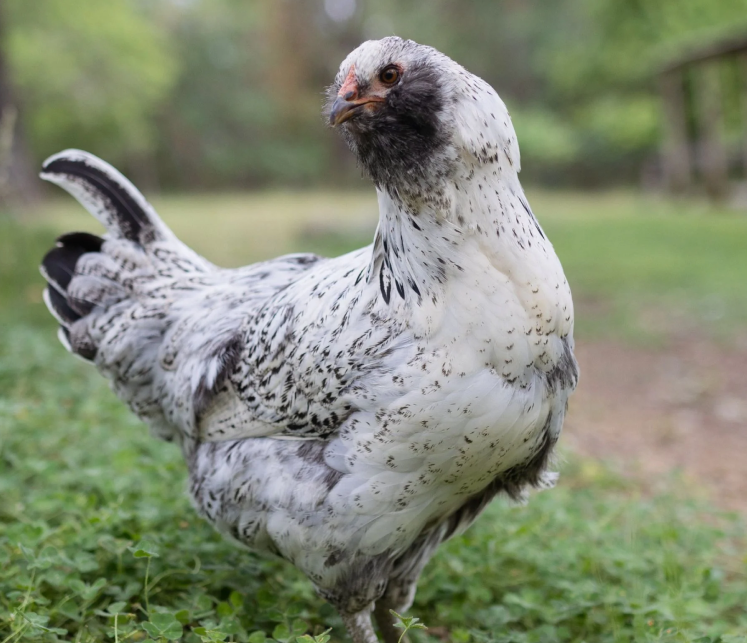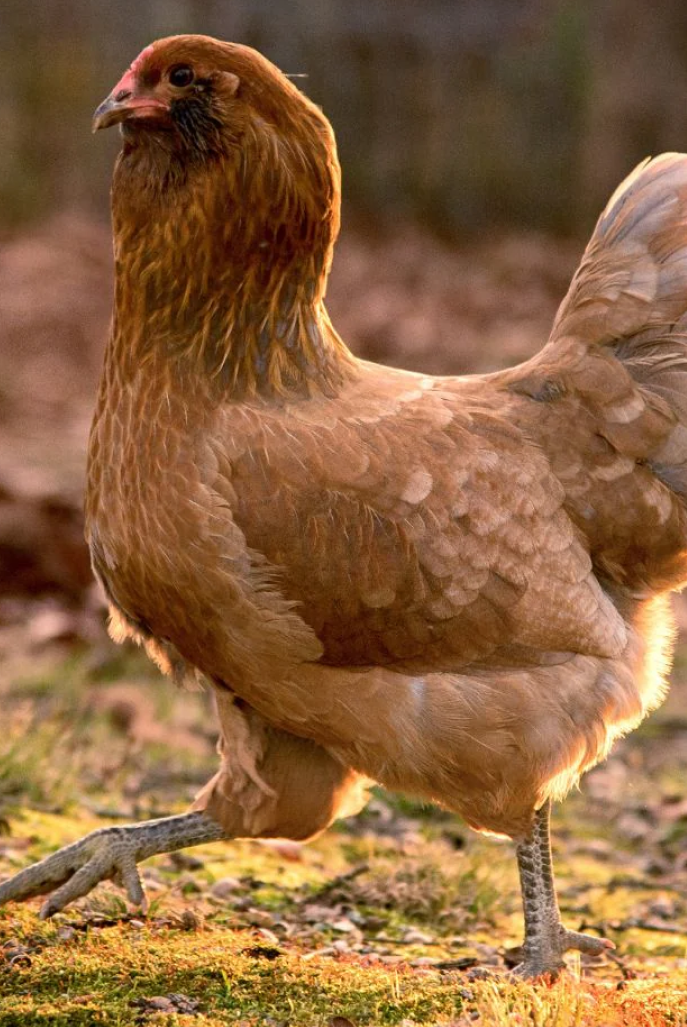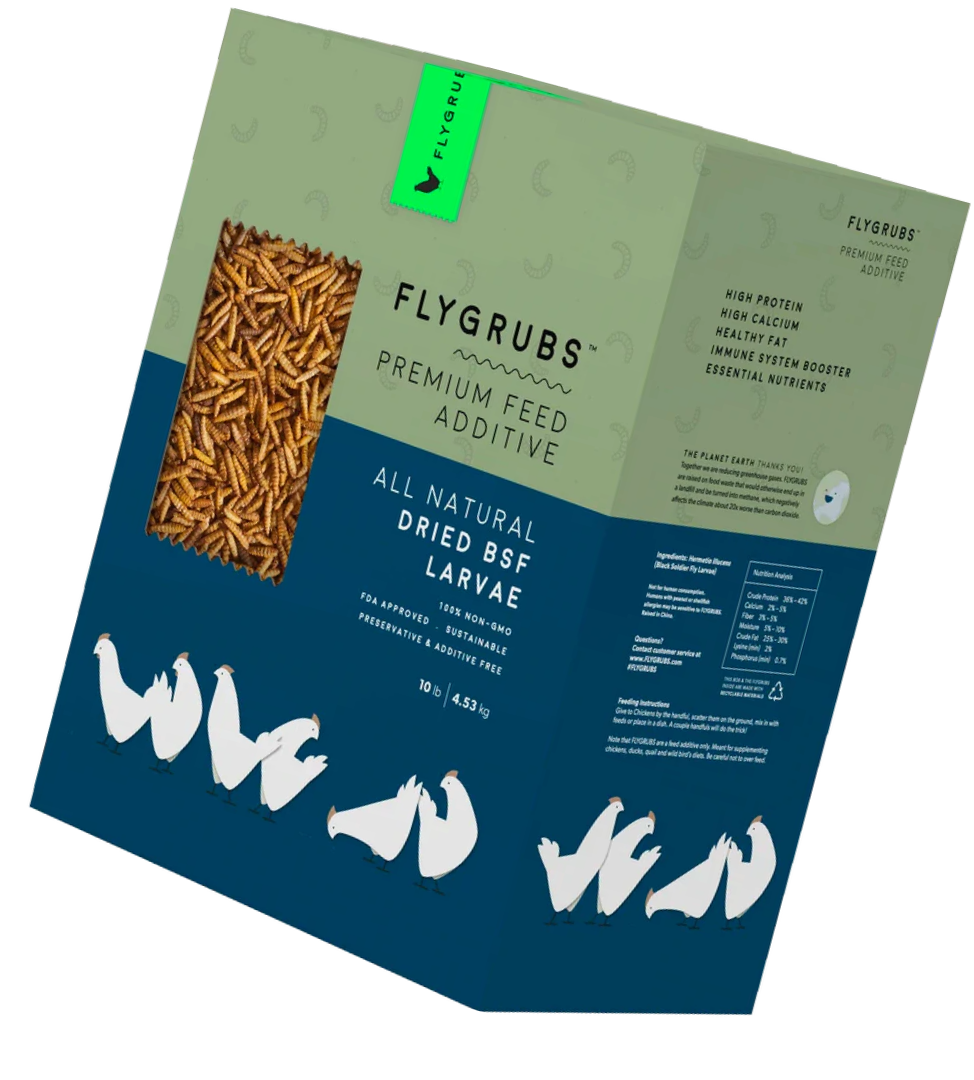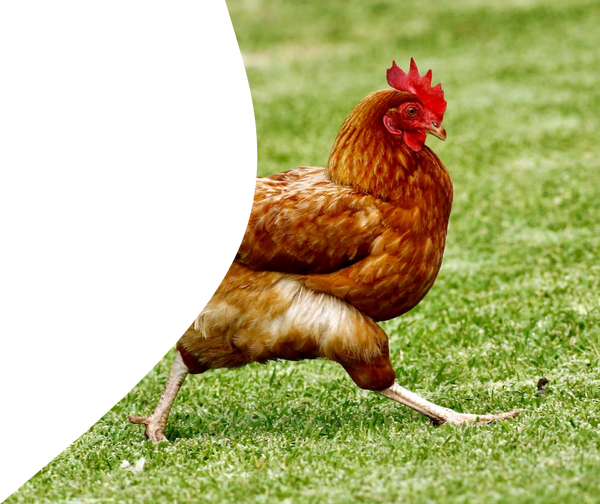
The Easter Egger is not a true breed but a hybrid chicken known for laying eggs in various shades of blue, green, pink, and other colors. Derived from Ameraucana or Araucana breeds crossed with other chickens, Easter Eggers are popular among backyard chicken keepers for their colorful eggs and friendly personalities. They are not recognized by the American Poultry Association as a standardized breed.
- Medium-sized birds
- Highly variable in appearance due to mixed genetics
- May have pea combs, muffs, and beards
- Leg color varies (often slate blue or yellow)
- Typically weigh around 4-7 pounds
- Body shape and feathering can vary widely

BREED & ORIGIN
Easter Egger (hybrid)
&
United States

LIFE EXPECTANCY
5-8 years

HEIGHT & WEIGHT
Height: 16-20 inches (40-51 cm)
&
Weight: Roosters: 5-7 lbs (2.3-3.2 kg)
Hens: 4-6 lbs (1.8-2.7 kg)

Chick (0-8 weeks)

Pullet/Cockerel (8-20 weeks)

Layer/Rooster (20+ weeks)
LOW
MEDIUM
HIGH
Temperament
Friendly, docile, curious
Activity Level
Moderate to high, good foragers
Climate Tolerance
Adaptable to various climates
Genetic Traits
Colorful egg-laying, varied appearance
Egg Laying Capacity
Good; 200-280 eggs per year
Broodiness
Low to moderate tendency

Feeding
A balanced layer feed is essential for maintaining their egg production and health. Supplement with calcium sources like oyster shells for strong eggshells. They are excellent foragers and enjoy a varied diet.

Housing
Easter Eggers require standard chicken housing with good ventilation. A minimum of 4 square feet per bird inside the coop and 10 square feet per bird in the run is recommended. They enjoy free-ranging but adapt well to confinement.

Health
Easter Eggers are generally hardy and healthy due to hybrid vigor. Regular health checks for common poultry issues like mites and lice are important. Their varied genetics can make them resistant to many common chicken ailments.

Breeding Practices:
- Breeding Easter Eggers can result in highly variable offspring. To maintain the blue/green egg-laying trait, at least one parent should carry the blue egg gene. The incubation period for their eggs is about 21 days.
Raising Chicks:
- Easter Egger chicks are typically hardy and grow at a moderate rate. Provide a warm brooder environment (starting at 95°F and gradually decreasing) until they're fully feathered at about 6-8 weeks. Offer chick starter feed and clean water. Introduce them gradually to the flock when they're big enough to hold their own.
Nutritional Needs:
- Easter Eggers require a balanced diet to support their egg production. Commercial layer feeds usually meet their needs. They benefit from free-ranging opportunities to forage for insects and plants.

Easter Eggers have become increasingly popular in backyard flocks due to their colorful eggs and friendly personalities. While not typically used in large-scale commercial operations, they have had a significant impact on the hobby farming and backyard chicken-keeping community.
Culturally, Easter Eggers have contributed to the growing interest in raising chickens for colorful eggs, often appealing to those who want unique and varied egg colors in their egg baskets.
Category |
Details |
|---|---|
Origin |
United States (hybrid) |
Temperature |
Friendly, docile, curious |
Common Health Issues |
Generally healthy due to hybrid vigor |
Commercial Use |
Not common in commercial settings |
Backyard Use |
Very popular for colorful eggs and friendly nature |
Breed Standards |
Not recognized as a standardized breed |
Exhibition |
Not typically shown in poultry exhibitions |
Role in Culture |
Contributed to interest in colorful egg-laying chickens |
Population Status |
Common in backyard flocks |
Conservation Efforts |
Not applicable as it's not a pure breed |
Breeding Practices |
Focus on maintaining blue/green egg-laying trait |
Fertility Rates |
Generally good due to hybrid vigor |
Parasite Control |
Standard poultry parasite control measures apply |
Market Value |
Chicks typically cost $3-$5 each |
Cost of Raising |
Approximately $30-$40 per chicken per year, depending on feed costs and housing |
- Colorful eggs (blue, green, pink, etc.)
- Good egg production (200-280 eggs per year)
- Friendly and docile temperament
- Hardy due to hybrid vigor
- Excellent foragers
- Not a recognized breed, so appearance and traits can be inconsistent
- Egg color can vary and may not always be as expected
- Not suitable for showing in poultry exhibitions
- Some purists may prefer standardized breeds

Easter Eggers typically start laying eggs at around 20-24 weeks of age.